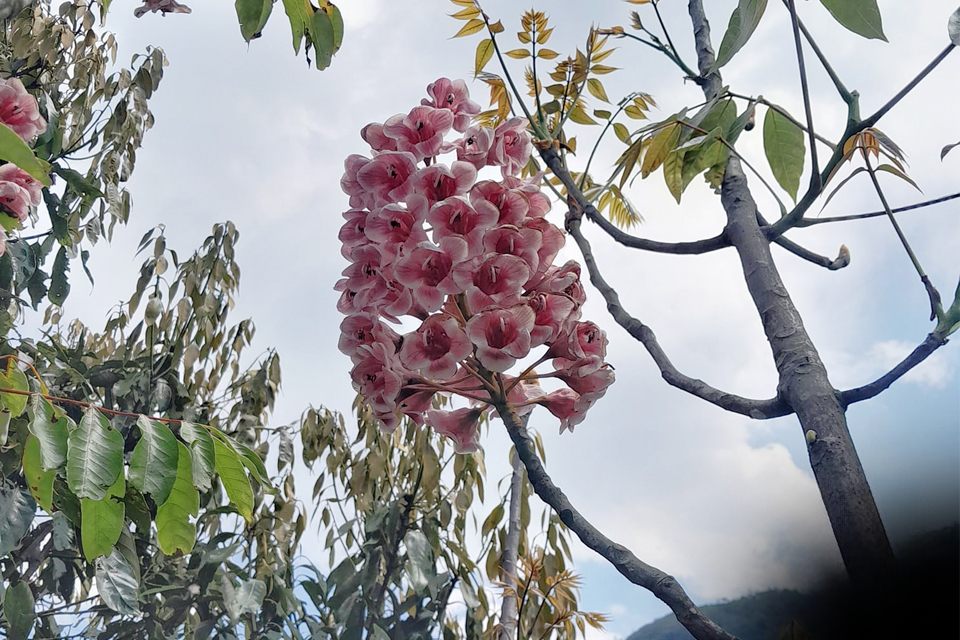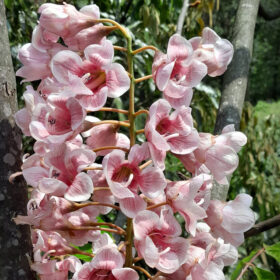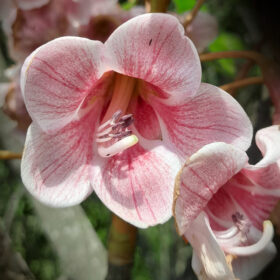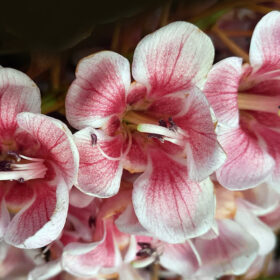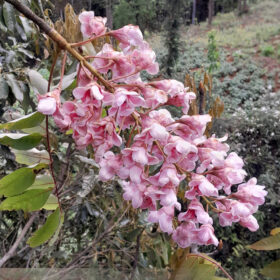Identification:
A small tree, 7-10 m tall, with nearly smooth or smooth branches. Leaves are large, alternate, and pinnately compound, with an odd number of leaflets (5-11), arranged oppositely. Leaflets are ovate, 10-15 cm long, and 4-5 cm wide, with 10-15 pairs of secondary veins. Inflorescences are racemose, 30-40 cm long, and located at the branch tips. Flower stalks are 2-2.4 cm long. Flowers are large, up to 5 cm in diameter, pale pink, bisexual, and pentamerous. The calyx is bell-shaped and pubescent on both surfaces. Petals are 5, oblong, and unequal in length. Stamens are 8, with free filaments, smooth and flattened at the base. The ovary is sessile, covered in hairs, and has 3 locules, each with 2 ovules. Fruits are lanceolate, tapering at both ends, 4 cm long, and dehisce by 3 thick valves. Seeds are 2 cm long and 1.2 cm wide.
Biology and Ecology:
Flowering occurs from March to April. The tree is found scattered in moist, shaded forests at an altitude of approximately 1500 m.
Distribution:
- Vietnam: Lào Cai (Sapa).
- Global: China (Yunnan, Guizhou, Guangdong).
Value:
A rare and unique genetic resource. One of only two species in the genus Bretschneidera, which is the only genus in the family Bretschneideraceae. The bark is used in traditional medicine to treat muscle and bone pain.
Conservation Status:
Currently found only at one location. Due to its limited distribution and threats from slash-and-burn agricultural practices, the species is highly vulnerable to extinction.
Red List Assessment:
Critically Endangered (CR) B1+2e.
Conservation Measures:
The species is listed in the Vietnam Red Data Book (1996) as “Threatened” (T). Its distribution area is within the management of Hoang Lien Son National Park. Seed collection for cultivation to preserve genetic resources is needed, and further surveys of its distribution are necessary.

